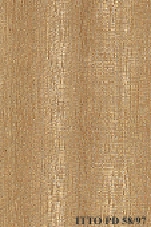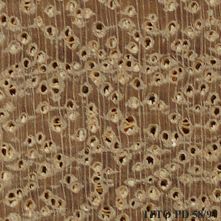
MANDIOQUEIRA (Qualea albiflora)
Trade Name
Mandioqueira
Scientific Name
Qualea albiflora Warm.
Family
VOCHYSIACEAE
Common Names
Mandioqueira (Brazil); Mandioqueira Lisa (Brazil); Mandioqueira Áspera (Brazil); Canela Mandioca (Brazil); Mandioqueiro (Brazil); Mandioqueira-Preta (Brazil); Mandioqueira-Lisa (Brazil); Mandioqueira-Escamosa (Brazil); Woto Kwarie; Grignon Fou; Umiry Rana (Brazil); Mandio
Scientific Name Synonyms
Ruizterania albiflora (Warm.) Marc.-Berti; Qualea glaberrima Ducke
Description Of The Tree
Botanical Description
Trees up to 30 m tall, with diameters of 50 to 80, up to 100 cm. The boles are straight and cylindrical, with commercial lengths of 20 m. It presents buttresses up to 2 m tall.
Natural Habitat
Qualea albiflora is a dominant tree in the terra firme tropical rain forests of northern South America.
Natural Distribution
Qualea albiflora is found in the Atlantic and in the Amazon regions well distributed in the north of South-America.
Wood Identification
Anatomic Description Of Wood
Wood diffuse porous. Vessels solitary and in short radial multiples. Occasionally tyloses common. Occasionally vessels per mm2 less than 6. Simple perforation plates. Vessel-ray pits similar to intervessel pits in size and shape. Intervessel pits medium, 7 to 1 Axial parenchyma aliform. Axial parenchyma confluent. Occasionally prismatic crystals in non-chambered axial parenchyma cells. 3 to 4 cells per parenchyma strand. 4 to 10 rays per mm (medium). Rays 1 to 4 seriate. Silica bodies in the ray cells. Homogeneous rays and/or sub-homogeneous rays (all ray cells procumbent). Fibers with simple to minutely bordered pits.
-
 Wood Macro Photo Radial Plane
Wood Macro Photo Radial Plane
-
 Wood Micro Photo Of Transversal Section
Wood Micro Photo Of Transversal Section
Availability
Cites Status
Unrestricted
General Wood Description
Odor
It has no discernible odor or taste.
Color
The light gray heartwood slightly distinct from the sapwood.
COLOR INDEX (1=Black, 7=Light yellow,white)
5
Grain
The grain is frequently interlocked.
Texture
Medium texture is reported in this species.
Luster
The surface of the wood is naturally moderate in luster.
Natural Durability
Q. albiflora is reported to be moderately resistant against termites attack.
Natural durability index (1= Very high durability, 7=Vey low durability)
3
Wood Physical Properties
Basic Density or Specific Gravity (O.D. weight/vol. green) (g/cm³)
0.57
Air-dry Density (Weight and volume at 12%MC) (g/cm³)
0.63
Total shrinkage Tangential (Saturated to 0%MC) (%)
9.5
Total shrinkage Radial (Saturated to 0%MC) (%)
5.3
Drying Defects
Ease of Drying: Air drying is reported to be fast. Drying Defects: Moderate warping and checking are reported. Kiln Schedules: Careful drying is recommended.
Recommended Dry Kiln Schedule
UK-D; US-T3-D2
Dimensional stability ratio (Total Tangential Shrinkage %/Total Radial Shrinkage %)
1.8
Wood Chemical Properties
Wood Mechanical Properties
Bending Strength (MOR),12%MC (kgf/cm²)
1095
Stiffness (MOE) 12%MC (kgf/cm²)
131000
Compression parallel to fiber 12%MC (kgf/cm²)
584
Compression perpendicular to fiber 12%MC (kgf/cm²)
79
Shear strength radial 12%MC (kgf/cm²)
133
Janka hardness (side) 12%MC (kgf)
613
Janka hardness (end grain) 12%MC (kgf)
846
Workability
Sawing
The behavior of this species in sawing is considered to be fair to difficult.
Rotary Veneer Cutting
It is interesting for slicing and peeling, thermal treatments are recommended.
Sliced Veneer
It is interesting for slicing and peeling, thermal treatments are recommended.
Blunting Effect
It is considered to have a slight blunting effect on the cutting elements.
Planing
This species is easy to plane.
Turning
30
Nailing
It is easy to nail.
Gluing
Gluing of this species is easy.
REFERENCED USES
End Uses Summary
HOUSING GENERAL, joists, boards, flooring, steps, FURNITURE AND CABINETS, common furniture, PLYWOOD AND VENEER, Decorative veneer, TURNING, turned furniture, TOOLS, agricultural tools, PACKING, heavy packing, NAVAL CONSTRUCTION
General Housing
- 10 - Silica in Timbers
Joists
- 12 - Tropical timbers of the world. Part I-Tropical American Species
Boards
- 13 - Dry kiln schedules for commercial woods. Temperate and tropical. Section III. Latin American (Mexico, Central, and South America) Woods–Conventional Temperatures
Flooring
- 14 - Handbook of Hardwoods
Steps
- 17 - Tree Conservation Database
Furniture Cabinets
- 21 - Tropical timbers of the world. Part III-Southeast Asian and Oceanian Species.
Furniture, Common
- 23 - Handbook of Hardwoods
Panels, Veneers
- 25 - Directory of Timber Trade Malaysia
Decorative veneer
- 28 - Ministry of Agriculture, Fisheries & Forest of Fiji
Turning
- 30 - Embassy of Honduras in Japan
Turned Articles
- 32 - Embassy of Cote d`Ivoire in Japan
Tools
- 42 - Utilización Industrial de Nuevas Especies Forestales en el Perú.
Agricultural Tools
- 44 - Atlas of Peruvian Woods
Packing
- 45 - Recopilación y Análisis de Estudios Tecnológicos de Maderas Peruanas
Heavy Packing
- 47 - Arvores Brasileiras
Shipbuilding
- 55 - Tropical Timber Atlas of Latin America
Please Provide Information To View Producer Information